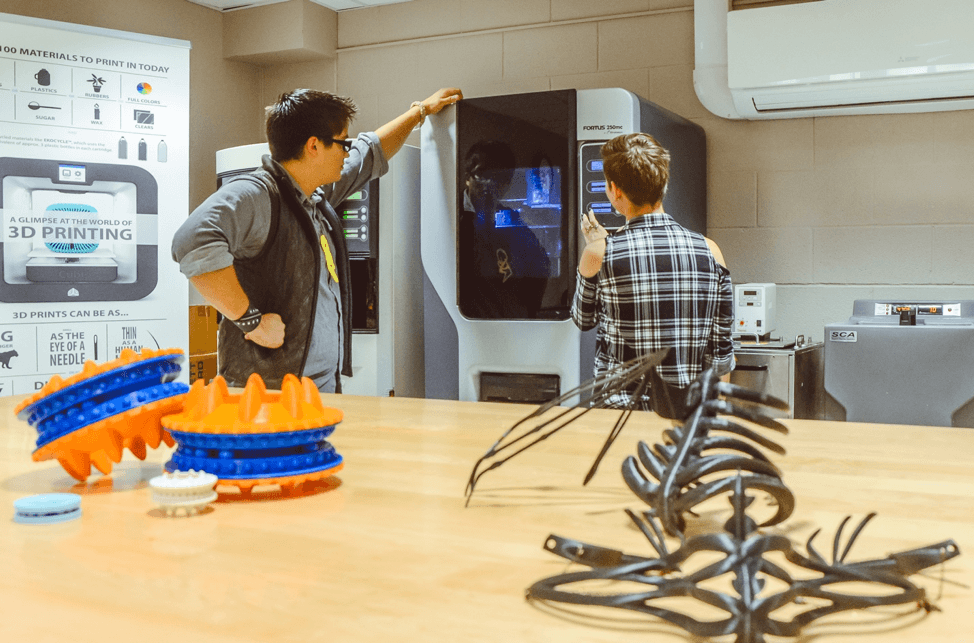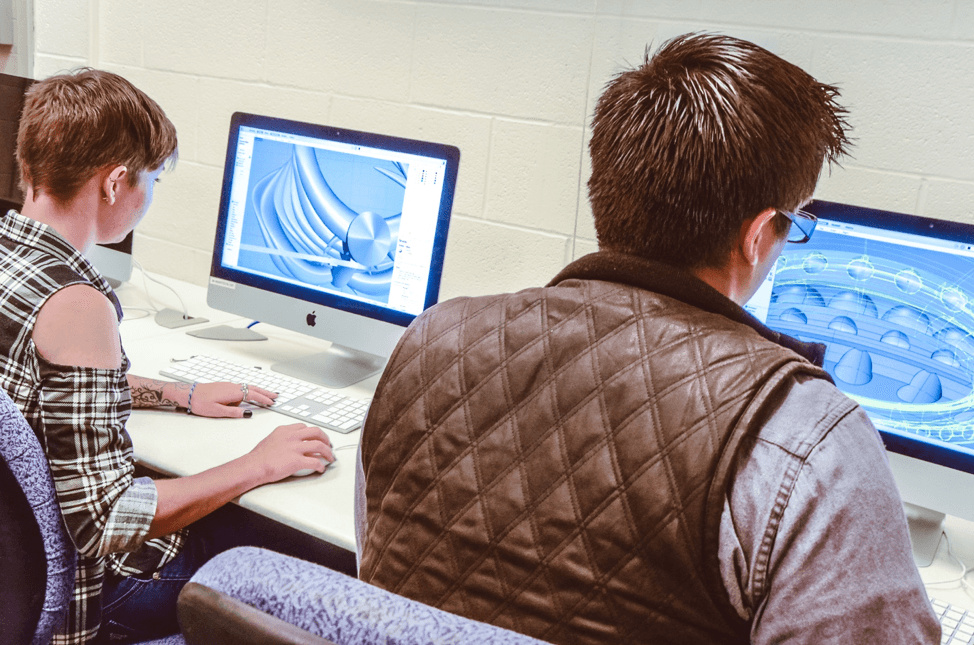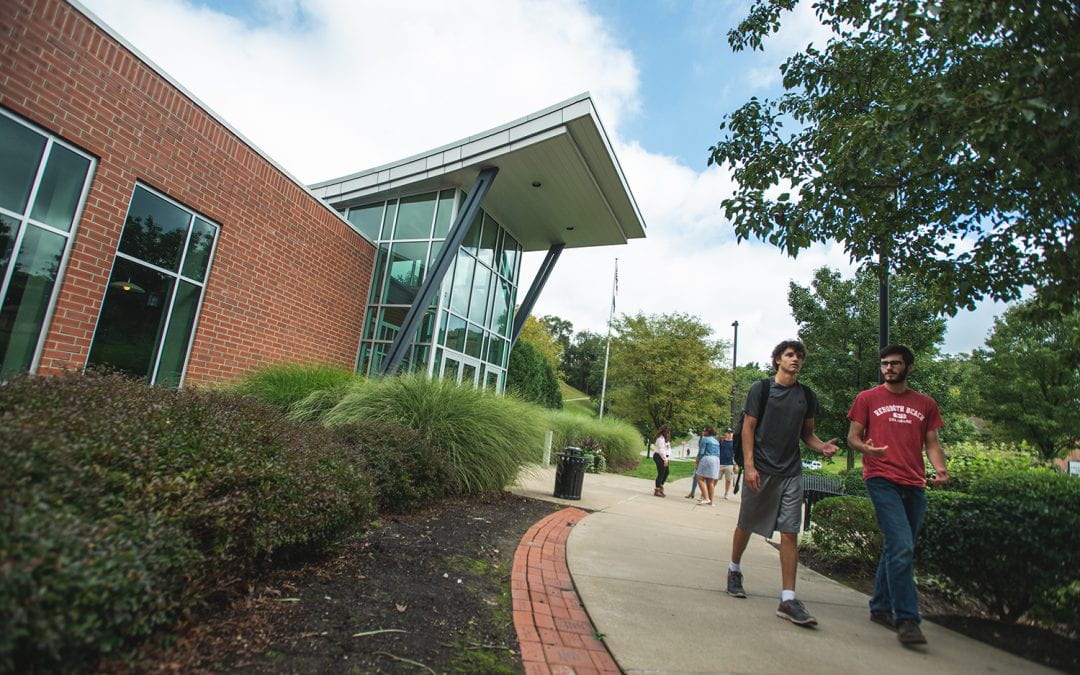
Penn State campuses bridge the gap between community and University through digital fluency
Faculty and staff at Penn State continue to go above and beyond the classroom to transform education, bridging the gap between the University and its surrounding communities. In the increasingly ubiquitous and changing world of technology, faculty are preparing students to move beyond digital literacy—the understanding of how to use the tools—to how they can achieve digital fluency.
Digital fluency is the ability to leverage technology to create new knowledge, uncover new problems, and to complement these with critical thinking, complex problem solving, and emotional intelligence to address the new challenges.
“In learning a foreign language, a literate person can read, speak, and listen for understanding in the new language. A fluent person can create something in the language: a story, a poem, a play, or a conversation. Similarly, digital fluency is the ability to create something new with those tools,” says Jennifer Sparrow, associate vice president of Teaching and Learning with Technology (TLT) at Penn State.
A new pilot program, Classroom 2 Community: Authentic Learning Assessment (C2C), hopes to foster digital fluency among students who take part in the project. C2C is an expansion of Penn State TLT’s open educational resources (OER) initiative to help faculty and students create affordable access to course content.
C2C assignments increase community engagement by asking students to solve problems with innovative solutions for positive change. Immersive technology such as virtual reality (VR) can take students into worlds they would never otherwise encounter. The use of these modern digital technologies provides students with experiences that weren’t possible in the past.
“Digital fluency is particularly powerful in community-based engaged scholarship projects,” said Jacqueline Edmonson, chancellor and chief academic officer at Penn State Greater Allegheny.
“Students see real-world opportunities to use digital tools, and their comfort with these tools can result in more impactful results as they strive to solve community problems. Students also gain a deeper sense of the ethical implications of the tools they are using as they make decisions about the data that is relevant and the consequences of the uses of particular forms of data,” Edmonson added.
By incorporating elements of digital fluency, C2C projects provide authentic learning experiences where classroom lessons directly impact real-life skills that can improve communities. Through a combination of using digital technology to create new knowledge and implementing soft skills such as critical thinking, creative problem solving, and collaboration, students can use their C2C experience to best position themselves to excel now and to meet the demands of the future workforce.
At Penn State, faculty and instructional designers from Teaching and Learning with Technology (TLT) are working side-by-side to design coursework that includes those types of elements and strategies. With increased access to real-life experiences, students earn essential experience that can prepare them to work in any number of professional settings and help them establish long-lasting relationships beyond college.
“We are enthusiastic about the Classroom 2 Community project’s potential to create positive changes on and off Penn State campuses throughout the Commonwealth,” said Angie Dick, learning design manager with TLT. “At the same time, it’s wonderful to collaborate with faculty in exploring new teaching and learning approaches to benefit the student learning experience.
Penn State Greater Allegheny students strengthen relationships with individuals with autism
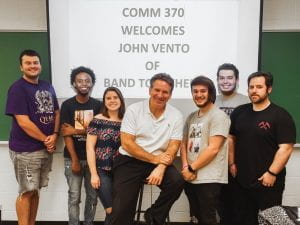
Greater Allegheny communications students pose with John Vento, founder of Pittsburgh’s Band Together.
At Penn State Greater Allegheny, Rosemary Martinelli, lecturer in marketing and communications, is working with Band Together, a nonprofit started by two Pittsburgh-based musicians to engage and employ—in DJ work and individual music-related performances—young men and women on the autism spectrum. Through this work, Martinelli’s students will do extensive research on autism as well as develop an understanding of public relations techniques and strategies.
Martinelli’s students will continue to work with her in COMM 471—Public Relations Methods during the spring 2020 semester to create a full-fledged, integrated marketing communications campaign for Band Together, complete with media and digital components.
“This is real work, similar to a PR [public relations] agency that has secondary audiences far down the road from what we do just within the 15 weeks,” Martinelli said. “Students can leave with experience; with something they can share and talk about with future employers. Being able to connect them with that organization, its mission, and the community as a whole. You can’t get that out of a book or a video, but you can get that out of a human connection.”
As part of their background research, students had an authentic learning experience in the world of autism. Using virtual reality headsets as well as programs Martinelli planned and coordinated with TLT, students had a glimpse into what daily life is like for an individual on the autism spectrum. There are also a series of Band Together events students will attend throughout the semesters to engage with individuals on the spectrum and to see how music and performance open them up and help them by providing employment opportunities. Through these events, students can better understand what autism is by learning to engage with individuals on the spectrum.
Students also engaged with individuals on the autism spectrum through interviews as part of a collaboration between Martinelli, TLT, and staff from the ACRES (Adults Creating Residential & Employment Solutions) Project in State College, a nonprofit that helps adults with autism build a foundation for a productive, independent life.
Through a virtual meeting, the students and the adults on the autism spectrum were able to question each other, delve into the work being done through the ACRES Project, and share first-person accounts of what life is like for those diagnosed with autism. Martinelli hopes to continue the interaction by organizing a face-to-face visit in the spring semester with her students and the individuals with autism at the ACRES Project.
“This project makes the class fun and exciting because we are working on a real-life activity,” said Greater Allegheny senior communications student Monica Burke. “I have worked with children on the autism spectrum. They are some of the most loving and kind children you will ever meet. Being able to work with an organization that is helping children further their talents and dreams is amazing.”
Altoona nursing students create digital resources to enhance community health
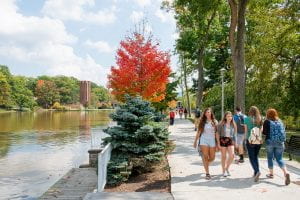
Students at the Penn State Altoona campus (pictured) are learning how valuable community health is through the creation of digital stories.
At Penn State Altoona, Delores McCreary, associate teaching professor in nursing, is helping students grasp the value of community health through the creation of digital stories and quick reference guides that provide information about how to care for patients from various cultural backgrounds.
Using H5P, a tool that allows users to create, share, and reuse interactive HTML5 content, nursing students at the Altoona campus are writing review questions. Written in the same style as the National Council Licensure Examination (NCLEX), an exam that students must pass to become registered nurses, these review questions will provide a continually evolving digital resource that future students can expand by adding more questions. McCreary is currently looking for opportunities to share the open educational resources with practicing nurses in the community.
“When students have a little more control over what they’re doing, they’re going to be more engaged in it,” McCreary explained. “It gives students a sense of contributing.”
Altoona senior Kennedy Stessney said the OER project has allowed her to become more involved in working with her peers and helped better prepare her for her future career. “I will be experiencing so many different cultures in the field of nursing when I graduate. I would never want to offend someone or disregard their values and beliefs, so this project helped me to understand what questions to ask and how to look for ways to individualize my care for each patient.”
From virtual reality headsets that bring students closer to understanding individuals on the autism spectrum to digital reference guides that captures the lessons learned from community health, Penn State’s Classroom 2 Community initiative is providing students with essential digital fluency skills. Students have the opportunity to address pressing societal challenges that impact them and their peers. Through the process, they are better equipped with the inherent capacity to navigate, collaborate, and create in digital spaces that go beyond the end of their courses.
For more information on the Classroom 2 Community initiative, contact us.
To learn more about how Penn State is working to provide accessible and affordable course materials for faculty and students, check out the open educational resources (OER) initiative.
